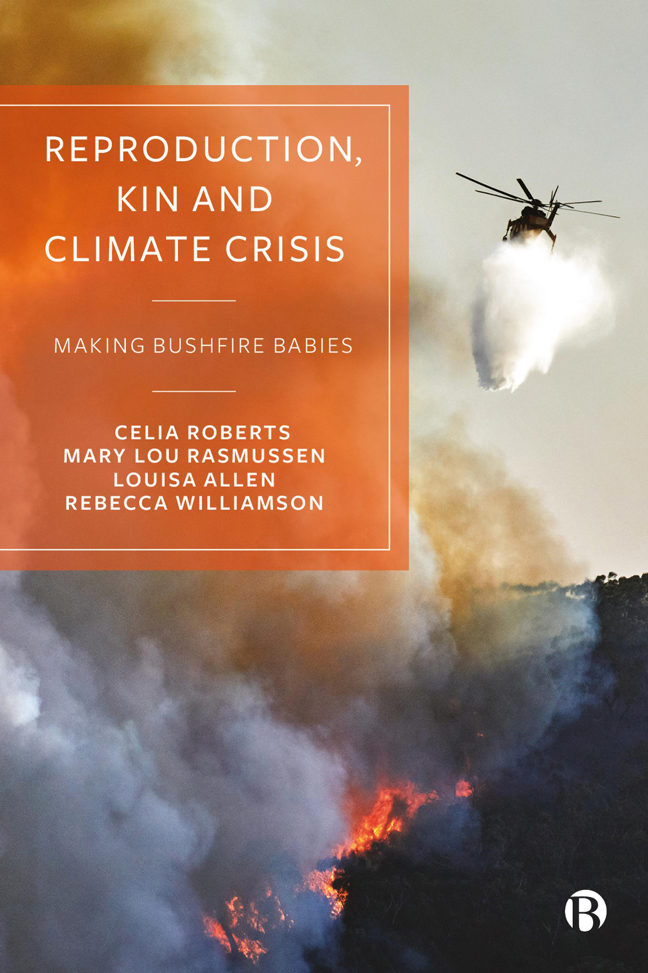Book contents
- Frontmatter
- Contents
- List of Figures and Table
- Notes on the Figures
- Notes on the Authors
- Acknowledgements
- Interleave 1
- 1 Reproducing in Climate Crisis
- Interleave 2
- 2 Methods in Crisis
- Interleave 3
- 3 Breath, Breathing and ‘Mum-Guilt’
- Interleave 4
- 4 Smoke, Machines and Public Health
- Interleave 5
- 5 Kin, Care and Crises
- Interleave 6
- 6 Pyro-reproductive Futures
- Interleave 7
- 7 Making Bushfire Babies
- Notes
- References
- Index
1 - Reproducing in Climate Crisis
Published online by Cambridge University Press: 24 January 2024
- Frontmatter
- Contents
- List of Figures and Table
- Notes on the Figures
- Notes on the Authors
- Acknowledgements
- Interleave 1
- 1 Reproducing in Climate Crisis
- Interleave 2
- 2 Methods in Crisis
- Interleave 3
- 3 Breath, Breathing and ‘Mum-Guilt’
- Interleave 4
- 4 Smoke, Machines and Public Health
- Interleave 5
- 5 Kin, Care and Crises
- Interleave 6
- 6 Pyro-reproductive Futures
- Interleave 7
- 7 Making Bushfire Babies
- Notes
- References
- Index
Summary
In the Southern Hemisphere summer of 2019–2020, three of us were living in Canberra, Australia's inland capital city, and the other in Auckland, Aotearoa-New Zealand. Like many parts of Australia, Canberra was in the grip of a long drought: the grass was brown, kangaroos had moved down from the mountains into the suburbs to search for food, and the heat was increasingly intense. Canberra's famous street and park trees were dying and the air crackled with dryness. The garden tanks were empty and the forest ponds had dried up. Dedicated citizens set up water stations for wildlife throughout local bushland, recording their activities on digital platforms so that others could join in. Across the Tasman, Aotearoa-New Zealand was experiencing its fourth warmest year on record, with hills usually covered in lush green grass left brown and the earth bearing large crevices and cracks. This especially hot summer season was also extremely dry, leaving the entire North Island in one of the most severe meteorological droughts ever recorded.
The Australian ‘fire season’ started early. Well before Christmas, bushfire reports became part of daily life. We Australians downloaded the ‘Fires Near Me’ app, and before travelling anywhere checked our route and destination. The nightly news was filled with images of smoke, flame and heroic, ash-covered firefighters. The scale of the fires was hard to comprehend. Altogether approximately one third of Australia's forests were burnt – more than 8 million hectares of vegetation across the south-east of the continent, an event unprecedented in the last 200 years (Godfree et al, 2021). The fires burned across South Australia, Victoria, Canberra and New South Wales (NSW). Over the summer, the Australian fires became global news. The Berliner Morgenpost, for example, developed an interactive map to allow viewers to compare the extent of the burned area to any region in the world. Video images of devastation and survival flooded the internet. In one memorable snippet, a koala staggered from a 42°C forest, coming across a group of cyclists. Reaching for a man's water bottle, it desperately drank, standing up on its hind legs to lean on the bike. Such behaviour from an iconically shy animal was both touching and appalling.
Humans and animals tried to escape the smoke and flames, but diverse habitats were devastated. Humans worked to save their farms and houses as well as the forests.
- Type
- Chapter
- Information
- Reproduction, Kin and Climate CrisisMaking Bushfire Babies, pp. 3 - 26Publisher: Bristol University PressPrint publication year: 2023



